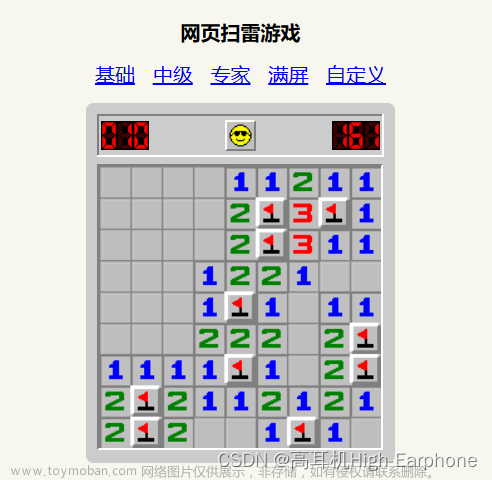一、栈的概念及结构
1、概念
栈:一种特殊的线性表,其只允许在表尾进行插入和删除元素操作。进行数据插入和删除操作的一端称为栈顶,另一端称为栈底。栈中的数据元素遵守后进先出 LIFO(Last In First Out)的原则。
压栈:栈的插入操作叫做进栈 / 压栈 / 入栈,入数据在栈顶。
出栈:栈的删除操作叫做出栈。出数据也在栈顶。
2、结构
二、栈的实现
栈的实现一般可以使用数组或者链表实现,相对而言数组的结构实现更优一些。如果用尾作栈顶(尾插、尾删),那么要用双向链表更好。如果要用单链表实现,那么就用头去作栈顶更好(头插、头删),这样入栈和出栈的效率都是 O(1)。因为栈只会在一端进行插入和删除操作,用数组效率还是比较高,数组在尾上插入数据的代价比较小。当然,也会存在一些问题,就是每次空间不够,要重新开辟空间,可能会造成一些内存浪费。
双向链表虽然不需要考虑内存大小的问题,但实际上价值并不高,在这里使用单向链表好于双向链表,能节省空间。但是,从各个角度而言, 栈的实现还是选择数组的结构来实现更好一些,不需要增容和释放,空间上更加节省,且CPU 高速缓存命中更高一些。
1、栈的顺序存储结构
数组的首元素作为栈底,另外一端作为栈顶,同时定义一个变量 top 来记录栈顶元素在数组中的位置。
2、栈的链表存储结构
单链表的尾部作为栈底,头部作为栈顶,方便插入和删除(进栈头插,出栈头删),头指针和栈顶指针 top 合二为一。
三、栈的实现
1、创建文件
- test.c(主函数、测试栈各个接口功能)
- Stack.c(栈接口函数的实现)
- Stack.h(栈的类型定义、接口函数声明、引用的头文件)
2、Stack.h 头文件代码
下面是动态增长的栈的结构,在实际中更常用。
#pragma once
#include <stdio.h>
#include <assert.h> // assert
#include <stdlib.h> // realloc
#include <stdbool.h> // bool
// 支持动态增长的栈
typedef int STDataType; // 类型重命名 栈中元素类型先假设为int
typedef struct Stack
{
STDataType* a; // 指向动态开辟的数组
int top; // 记录栈顶位置
int capacity; // 栈的容量大小
}Stack;
// 初始化栈
void StackInit(Stack* ps);
// 销毁栈
void StackDestroy(Stack* ps);
// 入栈
void StackPush(Stack* ps, STDataType data);
// 出栈
void StackPop(Stack* ps);
// 获取栈顶元素
STDataType StackTop(Stack* ps);
// 获取栈中有效元素个数
int StackSize(Stack* ps);
// 检测栈是否为空,如果为空返回非零结果,如果不为空返回0
int StackEmpty(Stack* ps); 四、Stack.c 中各个接口函数的实现
1、栈的初始化
// 初始化栈
void StackInit(Stack* ps)
{
assert(ps);
ps->a = NULL;
//思路一:
ps->top = 0; // 意味着top指向栈顶数据的下一个
//思路二:
//ps->top = -1; // 意味着top指向栈顶数据
ps->capacity = 0;
}思路二:
2、栈的销毁
// 销毁栈
void StackDestroy(Stack* ps)
{
assert(ps);
if (ps->a)
{
free(ps->a);
}
ps->a = NULL;
ps->top = 0;
ps->capacity = 0;
}3、入栈
// 入栈
void StackPush(Stack* ps, STDataType x)
{
assert(ps);
if (ps->top == ps->capacity) // 检查栈空间是否满了
{
int newCapacity = (ps->capacity == 0) ? 4 : (ps->capacity) * 2;
STDataType* tmp = realloc(ps->a, sizeof(STDataType) * newCapacity); // 扩容至新容量
if (tmp == NULL)
{
printf("realloc fail\n");
exit(-1);
}
ps->a = tmp;
ps->capacity = newCapacity; // 更新容量
}
ps->a[ps->top] = x; // 将新增元素放入栈顶空间
ps->top++; // 栈顶指针加一
}4、出栈
// 出栈
void StackPop(Stack* ps)
{
assert(ps);
assert(!StackEmpty(ps)); // 栈不能为空
ps->top--; // 栈顶指针减一
}5、获取栈顶元素
// 获取栈顶元素
STDataType StackTop(Stack* ps)
{
assert(ps);
assert(!StackEmpty(ps)); // 栈不能为空
return ps->a[ps->top-1];
}6、获取栈中有效元素个数
// 获取栈中有效元素个数
int StackSize(Stack* ps)
{
assert(ps);
return ps->top;
}7、检测栈是否为空
// 检测栈是否为空,如果为空返回非零结果,如果不为空返回0
bool StackEmpty(Stack* ps)
{
assert(ps);
//写法一:
/*if (ps->top == 0)
{
return true;
}
else
{
return false;
}*/
//写法二:
return ps->top == 0;
}五、代码整合
// Stack.c
#include "Stack.h"
// 初始化栈
void StackInit(Stack* ps)
{
assert(ps);
ps->a = NULL;
ps->top = 0; // 意味着top指向栈顶数据的下一个
ps->capacity = 0;
}
// 销毁栈
void StackDestroy(Stack* ps)
{
assert(ps);
if (ps->a)
{
free(ps->a);
}
ps->a = NULL;
ps->top = 0;
ps->capacity = 0;
}
// 入栈
void StackPush(Stack* ps, STDataType x)
{
assert(ps);
if (ps->top == ps->capacity) // 检查栈空间是否满了
{
int newCapacity = (ps->capacity == 0) ? 4 : (ps->capacity) * 2;
STDataType* tmp = realloc(ps->a, sizeof(STDataType) * newCapacity); //扩容至新容量
if (tmp == NULL)
{
printf("realloc fail\n");
exit(-1);
}
ps->a = tmp;
ps->capacity = newCapacity; // 更新容量
}
ps->a[ps->top] = x; // 将新增元素放入栈顶空间
ps->top++; // 栈顶指针加一
}
// 出栈
void StackPop(Stack* ps)
{
assert(ps);
assert(!StackEmpty(ps)); // 栈不能为空
ps->top--; // 栈顶指针减一
}
// 获取栈顶元素
STDataType StackTop(Stack* ps)
{
assert(ps);
assert(!StackEmpty(ps)); // 栈不能为空
return ps->a[ps->top-1];
}
// 获取栈中有效元素个数
int StackSize(Stack* ps)
{
assert(ps);
return ps->top;
}
// 检测栈是否为空,如果为空返回非零结果,如果不为空返回0
bool StackEmpty(Stack* ps)
{
assert(ps);
return ps->top == 0;
}六、测试栈的功能
栈的实现不能像顺序表一样,去实现一个打印函数来遍历栈并输出,这样做就不符合栈的特点了(只能在栈顶插入删除,后进先出),所以我们这样来实现出栈:获取并打印栈顶元素,再删除栈顶元素,继续获取新的栈顶元素。文章来源:https://www.toymoban.com/news/detail-619619.html
 文章来源地址https://www.toymoban.com/news/detail-619619.html
文章来源地址https://www.toymoban.com/news/detail-619619.html
到了这里,关于【数据结构】栈(Stack)的实现 -- 详解的文章就介绍完了。如果您还想了解更多内容,请在右上角搜索TOY模板网以前的文章或继续浏览下面的相关文章,希望大家以后多多支持TOY模板网!










![[数据结构 -- C语言] 栈(Stack)](https://imgs.yssmx.com/Uploads/2024/02/448386-1.png)






